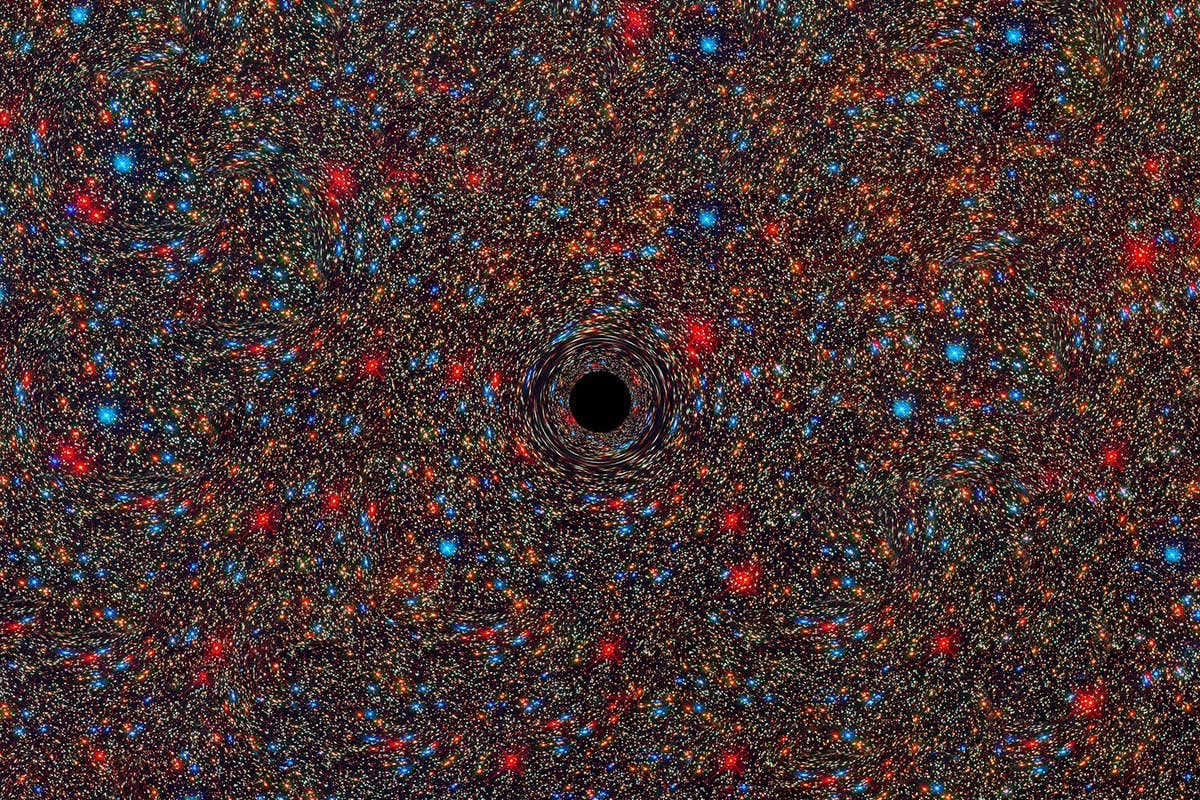
New Research Redefines Black Holes Without Singularities
A groundbreaking study recently released in the Journal of Cosmology and Astroparticle Physics (JCAP) is revolutionizing our understanding of one of the most puzzling phenomena in astrophysics: black holes. Long enveloped in enigma, black holes have historically confounded physicists with the existence of a singularity—a point of infinite density where conventional physical theories falter. Nevertheless, fresh research led by a collaborative group of theorists and astrophysicists presents a promising avenue for resolving this cosmic puzzle.
The Crux of the Issue: Singularities
Originally proposed by Karl Schwarzschild in 1916 as a resolution to Einstein’s equations of general relativity, black holes have transitioned from mere mathematical curiosities to observable and even photographable celestial entities. Landmark milestones such as the detection of gravitational waves in 2015 and the imaging of a black hole’s event horizon in 2019 and 2022 by the Event Horizon Telescope have validated their existence. Yet, one aspect remains unsatisfactory for scientists: the singularity.
A singularity represents a region at a black hole’s center where matter acquires infinite density and spacetime curvature becomes limitless. Beyond this threshold, general relativity fails to operate, and quantum theory does not provide a comprehensive resolution. This collapse in physical law is perceived by researchers as a warning sign — an indication of the urgent need for new and more profound theories.
“This is an intolerable circumstance for science,” states Stefano Liberati, director of the Institute for Fundamental Physics of the Universe (IFPU) and one of the paper’s co-authors. Citing the Latin phrase “Hic sunt leones”—traditionally signifying unexplored territories on old maps—Liberati underscores that the singularity signifies a domain where scientific comprehension falters.
A Unified Approach to New Black Hole Models
What distinguishes this novel study is its origins in a focused IFPU workshop that convened a diverse array of theorists and observational scientists, spanning both junior and senior researchers. The outcome is a cohesively unified contribution to black hole inquiry, titled “Towards a Non-singular Paradigm of Black Hole Physics.”
The paper delineates three primary models of black holes:
1. Standard Black Holes:
– Include both a singularity and an event horizon (the limit beyond which nothing escapes).
– Adhere to Einstein’s general relativity yet grapple with the complications linked to infinite density.
2. Regular Black Holes:
– Preserve an event horizon while eradicating the singularity through alterations inspired by quantum mechanisms.
– Propose a more uniform core, where spacetime maintains stability, even at extreme densities.
3. Black Hole Mimickers:
– Sidestep both the singularity and the event horizon.
– Comprise exotic objects such as gravastars and boson stars that imitate black holes from the outside but are distinct internally.
These alternative models contest the inevitability of singularities and pave the way for radically different interpretations of spacetime within black holes.
Observational Challenges—and Prospects
Despite the theoretical elegance of these alternatives, existing technology has yet to unveil the interior structures of black holes. Nonetheless, these models introduce testable discrepancies, particularly near and just beyond the event horizon—regions that could soon be examined with increasing accuracy.
“Regular black holes, and especially mimickers, are never precisely identical to standard black holes — not even beyond the horizon,” clarifies Liberati. This subtle asymmetry could be pivotal in differentiating them through observations.
Future upgrades to the Event Horizon Telescope, capable of capturing black hole silhouettes with higher resolutions, alongside advanced gravitational wave observatories, may soon reveal anomalies suggesting deviations from conventional predictions. These deviations, however minute, could furnish the first empirical insights into the quantum realms of black holes.
Steering the Quantum Future
The ramifications of addressing the singularity dilemma extend beyond astrophysics. The quest for a consistent, singularity-free model may bear implications for the development of a quantum theory of gravity—effectively merging Einstein’s general relativity with quantum mechanics, a long-duration aspiration in theoretical physics.
Quantum gravity candidates—like loop quantum gravity, string theory, and causal dynamical triangulations—might provide the foundational structure for the regular or mimicker models elaborated in the paper. As theoretical insights advance and observational capabilities enhance, we may uncover that black holes are not cosmic dead ends but rather gateways to a deeper comprehension of the universe’s essential nature.
A New Era in Black Hole Research
“What lies ahead for gravity research,” concludes Liberati, “is an exhilarating period. We are embarking on a phase where a vast and largely unexplored terrain is unfolding before us.”
The paper “Towards a Non-singular Paradigm of Black Hole Physics” is poised to be a landmark in this expedition, fostering both theoretical breakthroughs and observational initiatives. As our cosmic map extends into these “lion-filled” realms, the enigmatic core of black holes may ultimately reveal its secrets.